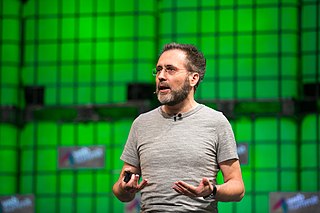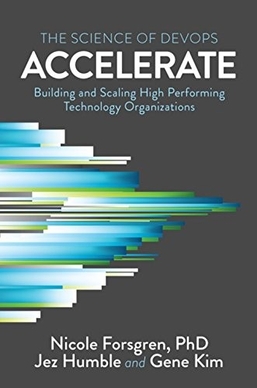
An IT administrator, system administrator, sysadmin, or admin is a person who is responsible for the upkeep, configuration, and reliable operation of computer systems, especially multi-user computers, such as servers. The system administrator seeks to ensure that the uptime, performance, resources, and security of the computers they manage meet the needs of the users, without exceeding a set budget when doing so.
Data engineering refers to the building of systems to enable the collection and usage of data. This data is usually used to enable subsequent analysis and data science; which often involves machine learning. Making the data usable usually involves substantial compute and storage, as well as data processing.
CollabNet VersionOne is a software firm headquartered in Alpharetta, Georgia, United States. It was Founded by Tim O’Reilly, Brian Behlendorf, and Bill Portelli. CollabNet VersionOne products and services belong to the industry categories of value stream management, DevOps, agile management, application lifecycle management (ALM), and enterprise version control.

Urs Hölzle is a Swiss software engineer and technology executive. As Google's eighth employee and its first VP of Engineering, he has shaped much of Google's development processes and infrastructure, as well as its engineering culture. His most notable contributions include leading the development of fundamental cloud infrastructure such as energy-efficient data centers, distributed compute and storage systems, and software-defined networking. Until July 2023, he was the Senior Vice President of Technical Infrastructure and Google Fellow at Google. In July 2023, he transitioned to being a Google Fellow only.
Progress Chef is a configuration management tool written in Ruby and Erlang. It uses a pure-Ruby, domain-specific language (DSL) for writing system configuration "recipes". Chef is used to streamline the task of configuring and maintaining a company's servers, and can integrate with cloud-based platforms such as Amazon EC2, Google Cloud Platform, Oracle Cloud, OpenStack, IBM Cloud, Microsoft Azure, and Rackspace to automatically provision and configure new machines. Chef contains solutions for both small and large scale systems.
DevOps is a set of practices and tools integrating and automatizing software development ("dev") and IT operations ("ops"). DevOps is used for improving and shortening the systems development life cycle.
Continuous testing is the process of executing automated tests as part of the software delivery pipeline to obtain immediate feedback on the business risks associated with a software release candidate. Continuous testing was originally proposed as a way of reducing waiting time for feedback to developers by introducing development environment-triggered tests as well as more traditional developer/tester-triggered tests.
New Relic is a US-based web tracking and analytics company. The company's cloud-based software allows websites and mobile apps to track user interactions and service operators' software and hardware performance.

Jesse Robbins is an American technology entrepreneur, investor, and firefighter notable for his pioneering work in Cloud computing, role in creating DevOps/Chaos Engineering, and efforts to improve emergency management.
In software engineering, service virtualization or service virtualisation is a method to emulate the behavior of specific components in heterogeneous component-based applications such as API-driven applications, cloud-based applications and service-oriented architectures. It is used to provide software development and QA/testing teams access to dependent system components that are needed to exercise an application under test (AUT), but are unavailable or difficult-to-access for development and testing purposes. With the behavior of the dependent components "virtualized", testing and development can proceed without accessing the actual live components. Service virtualization is recognized by vendors, industry analysts, and industry publications as being different than mocking. See here for a Comparison of API simulation tools.
In software engineering, a microservice architecture is a variant of the service-oriented architecture structural style. It is an architectural pattern that arranges an application as a collection of loosely coupled, fine-grained services, communicating through lightweight protocols. One of its goals is that teams can develop and deploy their services independently of others. This is achieved by the reduction of several dependencies in the code base, allowing developers to evolve their services with limited restrictions from users, and for additional complexity to be hidden from users. As a consequence, organizations are able to develop software with fast growth and size, as well as use off-the-shelf services more easily. Communication requirements are reduced. These benefits come at a cost to maintaining the decoupling. Interfaces need to be designed carefully and treated as a public API. One technique that is used is having multiple interfaces on the same service, or multiple versions of the same service, so as to not disrupt existing users of the code.
Chaos engineering is the discipline of experimenting on a system in order to build confidence in the system's capability to withstand turbulent conditions in production.
Infrastructure as code (IaC) is the process of managing and provisioning computer data center resources through machine-readable definition files, rather than physical hardware configuration or interactive configuration tools. The IT infrastructure managed by this process comprises both physical equipment, such as bare-metal servers, as well as virtual machines, and associated configuration resources. The definitions may be in a version control system, rather than maintaining the code through manual processes. The code in the definition files may use either scripts or declarative definitions, but IaC more often employs declarative approaches.

Bazel is a free and open-source software tool used for the automation of building and testing software. Google uses the build tool Blaze internally and released an open-source port of the Blaze tool as Bazel, named as an anagram of Blaze. Bazel was first released in March 2015 and entered beta by September 2015. Version 1.0 was released in October 2019.
DataOps is a set of practices, processes and technologies that combines an integrated and process-oriented perspective on data with automation and methods from agile software engineering to improve quality, speed, and collaboration and promote a culture of continuous improvement in the area of data analytics. While DataOps began as a set of best practices, it has now matured to become a new and independent approach to data analytics. DataOps applies to the entire data lifecycle from data preparation to reporting, and recognizes the interconnected nature of the data analytics team and information technology operations.
BeyondCorp is an implementation, by Google, of zero-trust computer security concepts creating a zero trust network.

MLOps or ML Ops is a paradigm that aims to deploy and maintain machine learning models in production reliably and efficiently. The word is a compound of "machine learning" and the continuous development practice of DevOps in the software field. Machine learning models are tested and developed in isolated experimental systems. When an algorithm is ready to be launched, MLOps is practiced between Data Scientists, DevOps, and Machine Learning engineers to transition the algorithm to production systems. Similar to DevOps or DataOps approaches, MLOps seeks to increase automation and improve the quality of production models, while also focusing on business and regulatory requirements. While MLOps started as a set of best practices, it is slowly evolving into an independent approach to ML lifecycle management. MLOps applies to the entire lifecycle - from integrating with model generation, orchestration, and deployment, to health, diagnostics, governance, and business metrics. According to Gartner, MLOps is a subset of ModelOps. MLOps is focused on the operationalization of ML models, while ModelOps covers the operationalization of all types of AI models.

ModelOps, as defined by Gartner, "is focused primarily on the governance and lifecycle management of a wide range of operationalized artificial intelligence (AI) and decision models, including machine learning, knowledge graphs, rules, optimization, linguistic and agent-based models". "ModelOps lies at the heart of any enterprise AI strategy". It orchestrates the model lifecycles of all models in production across the entire enterprise, from putting a model into production, then evaluating and updating the resulting application according to a set of governance rules, including both technical and business KPI's. It grants business domain experts the capability to evaluate AI models in production, independent of data scientists.

Accelerate: The Science of Lean Software and DevOps: Building and Scaling High Performing Technology Organizations is a software engineering book co-authored by Nicole Forsgren, Jez Humble and Gene Kim. The book explores how software development teams using Lean Software and DevOps can measure their performance and the performance of software engineering teams impacts the overall performance of an organization.
In software engineering, more specifically in distributed computing, observability is the ability to collect data about programs' execution, modules' internal states, and the communication among components. To improve observability, software engineers use a wide range of logging and tracing techniques to gather telemetry information, and tools to analyze and use it. Observability is foundational to site reliability engineering, as it is the first step in triaging a service outage. One of the goals of observability is to minimize the amount of prior knowledge needed to debug an issue.






